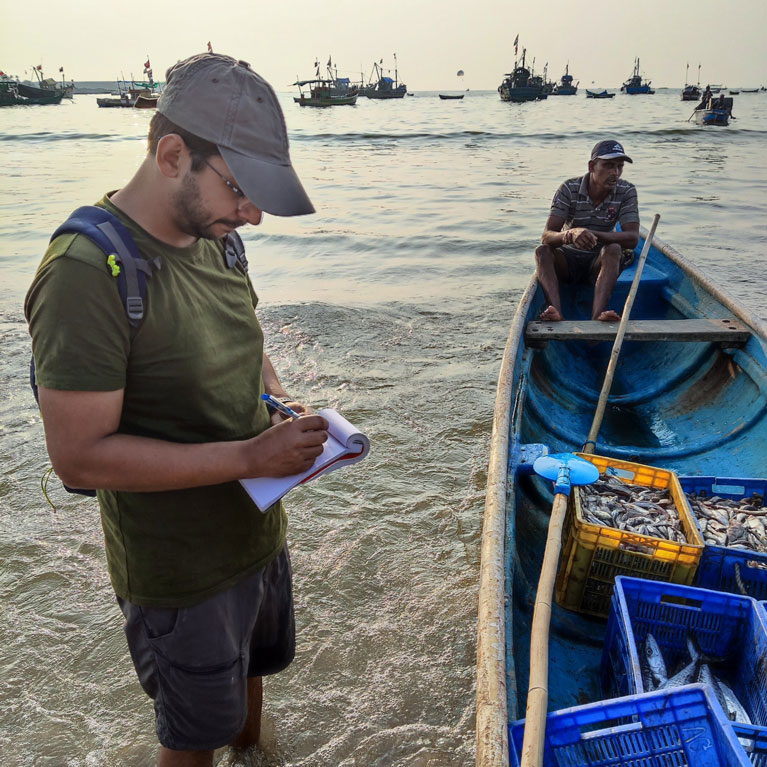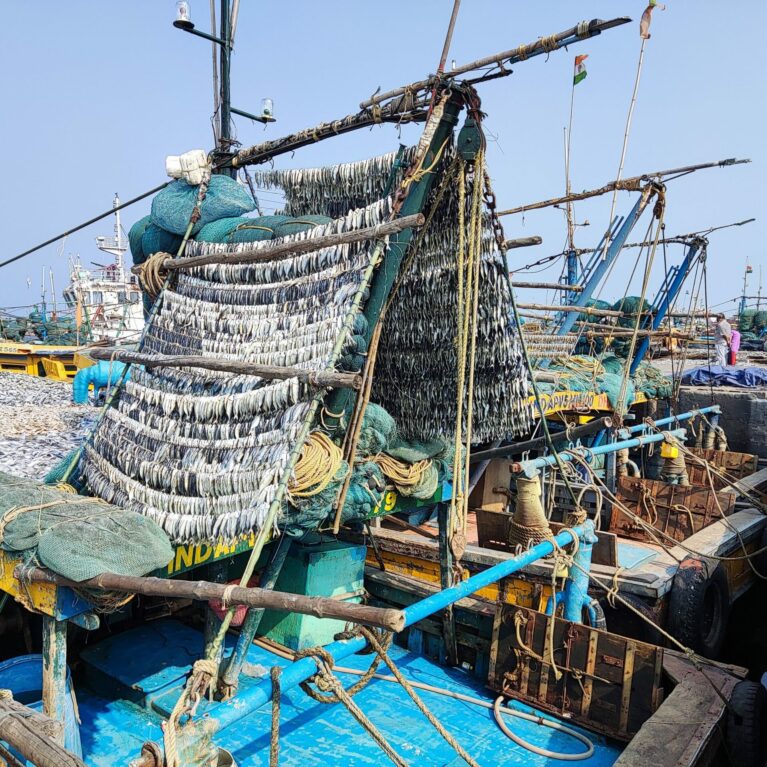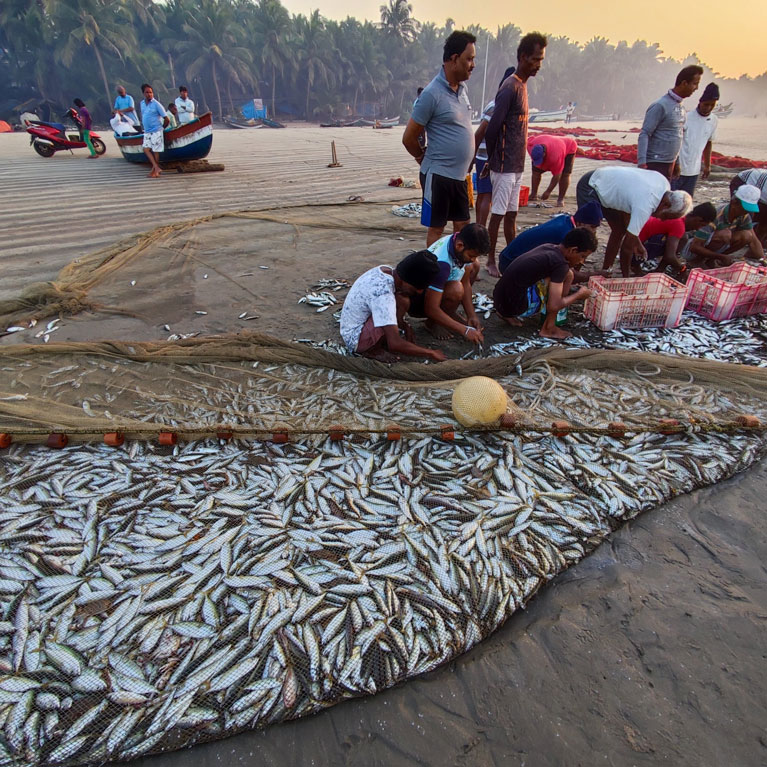Getting to grips with sharks and rays in India’s fisheries
India is the world’s second-largest fishing nation. But without sufficient information about how the more than 120 species of sharks and rays are distributed around the country, the most effective management will always be elusive. Imran wants to understand where sharks and rays live along the coast of Visakhapatnam. He also wants to understand what fishing gear is used and how fisheries overlap with sharks and rays. This can all open a dialogue between fishers (more than 5,000 vessels operate in one of India’s largest fishing fleets) and scientists about the conservation and management of threatened species.
Since I grew up in the landlocked hills and mountains of the eastern Himalayas in India, people often ask me how I ended up studying marine and aquatic systems. With advances in technology and communication, the world has become a ‘global village’ where learning about – and dreaming to become – anything is possible. After watching documentaries and reading articles, I became awestruck by the vastness of the oceans and the magnificence of the animals that inhabit them. Inspired by ocean scientists and conservationists, I started moving towards becoming a marine researcher, one step at a time. Currently,...



Where’s the catch? Understanding the distribution and bycatch risk of sharks and rays in India
The primary objective of this project is to understand what governs the distribution of different shark and ray species in Indian waters and how the risk of being caught – intentionally or by accident – in different types of fishing gear may vary.
Sharks and rays are crucial components of the marine ecosystem. Unfortunately, they are also some of the most threatened species on the planet, with their numbers declining rapidly in Indian waters. Although there have been unanimous calls to conserve these species, there has been little action, mostly because we know so little about them. Conserving these species requires understanding both their habitat requirements and the risk they face of getting caught in fisheries.
With records of more than 120 shark and ray species, of which more than 30 are known to be caught regularly in fisheries, India is the second-largest shark-fishing nation in the world. Yet little is known about how different species are distributed around the country. There is growing concern about their rapidly declining numbers and an awareness of the need to understand their habitat requirements to help conserve them. Unfortunately, we lack this information even from relatively well-studied areas like Malvan on the west coast, in the state of Maharashtra. Around India, sharks and rays have been regarded only as targets for fisheries and so our knowledge of them goes no further than catch rates and annual catch trends. Research at Malvan has focused on understanding the seasonal distribution of species like common blacktip and scalloped hammerhead sharks and also on delineating potential nursery grounds by interviewing fishers. Our project will build on this knowledge and provide results that can be directly utilised by management authorities, in conjunction with local communities, to help conserve sharks and rays.
On the other side of India, Visakhapatnam hosts one of the country’s largest fishing fleets with more than 5,000 vessels, yet information is limited to catch composition and catch rates. In Visakhapatnam, this study would be the first to provide baseline information about threatened species and their habitat requirements. The port city is in the state of Andhra Pradesh and its coast is different from that of Malvan in terms of oceanographic features such as the continental shelf, productivity and seasonal changes. Therefore, while this project will help develop crucial guidelines for shark and ray conservation, it will also help generate knowledge about how habitat features may affect the distribution and ecology of shark and ray species.
The main aims of this project are:
- To understand how shark and ray species are distributed along the coast, what factors govern their distribution, and the presence of critical habitats and nurseries.
- To understand the different types of fishing gear that are used along the coast, where the fisheries operate and to what extent they overlap with the distribution of shark and ray species.
- To engage with local fishers in order to collect crucial information about sharks and rays and understand their perceptions of fisheries, sustainability and conservation, and to create dialogues about fisheries management.
Summary of main research results/outcomes
Sharks and rays face significant threats due to overfishing, with India’s elasmobranch populations rapidly declining. This study assessed the ecological and fishery-level factors influencing their capture at Malvan and Visakhapatnam using surveys, fisher interviews, GPS data, and satellite imagery. Results showed higher catch rates in Visakhapatnam, with large-mesh gillnets and trawlers being predominant. Environmental factors like depth and sea surface temperature, along with seasonal variations, played key roles in shaping capture dynamics. As opposed to building general management guidelines for all fisheries, we suggest that conservation strategies should focus on fine-scale, community-driven approaches tailored to local contexts, such as incentivizing bycatch release and fostering collaboration between fishers, NGOs, and governments. These findings provide a replicable framework for sustainable fishery management and elasmobranch conservation.
Conservation achievements
We were able to fulfil the major objectives of our proposal by developing an interdisciplinary framework to understand fishery dynamics and catch risk of endangered species. In addition, by collecting data on all species caught alongside elasmobranchs, we were able to gain an in-depth understanding of how and why different fisheries operate, and how can they be managed sustainably. Our findings are presented in two different manuscripts that are currently under review.

